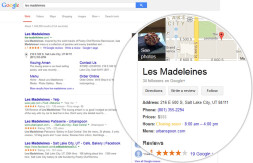The Secret to Going Viral

In a word, emotions. The most viral content, whether it’s a video, article, or photo, evokes an “activating” emotion. Activating emotions are things like joy, surprise, fear, and anger, where your pulse quickens and maybe a little adrenaline goes into your system. Your body is ready for action. This physical desire to do something often manifests in clicking that button to share what made you laugh, shake your fist, or dance in your seat.
Some emotions are not so great for content. Sadness and contentment are both “deactivating” emotions that increase a person’s inertia. After a satisfying meal, you’re not about to jump up and run some laps. If someone breaks up with you, you likely want to hole up in a dark room and wonder why it happened. (Or you may possibly get angry and smash their car windows, because anger is activating!)
The best and most-shared content is often created by marketing teams full of clever writers who earn their living by coming up with clever things. Don’t try to compete with them. I once saw a product demonstration video for a compact teardrop camper. The thing was so tiny, but they proceeded to pull out various compartments until it was like a Transformer full of cool functions. Though it was badly edited, I was still in awe and shared it with my friends. If you’re lucky, your product can speak for itself. You can follow these tips for creating a viral video, or you can simply record yourself using the product and showing all its nifty functions.
In thinking about what emotion you’d like to evoke, think about which best aligns with your image. Coca Cola is all about happy people doing happy things while drinking Coke. Greenpeace is all about invoking outrage over what greedy corporations are doing to the environment. Mazda likes to generate excitement about fast, nimble cars. What’s your angle?














